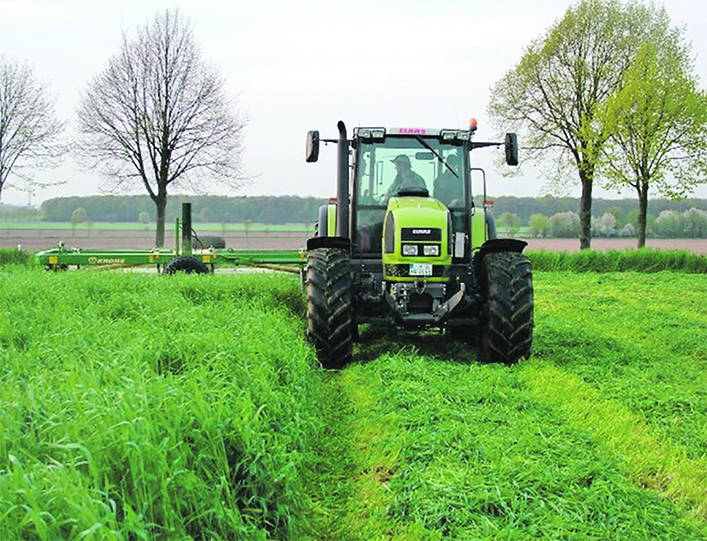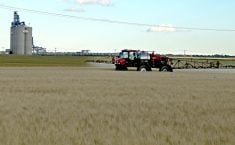Tougher and earlier maturing than winter wheat, hybrid rye can offer a grazing and forage alternative
Hybrid fall rye can be an important ingredient in many types of livestock feed rations, especially beef. It can serve as a forage or as a supplement to traditional feed grain.
Herman Wehrle from FP Genetics said the beef industry can gain efficiencies by incorporating hybrid fall rye into feeding systems. Wehrle said he plans to focus his talks on forage aspects because it’s more complex than grain.
“When people talk about baling any kind of cereal crop for greenfeed or picking it up for silage, they generally think of it as a failed crop. And this year that’s probably the situation,” said Wehrle, adding that the salvage view is an oversimplification of the value of hybrid rye.
“There is a significant amount of annual forage grown in Western Canada specifically for that purpose. Farmers have found that, over time, it’s just too costly and yields are too variable to use perennial forages. Farmers have moved more to a mix of annuals and perennials.”
Wehrle said fall rye has the same advantage as winter wheat. It goes into the ground in fall and gets a start. If winter conditions are anywhere close to normal, it should survive and get a big jump in the spring. That jump is often enough to grow a decent crop even if the summer turns dry.
“A hybrid fall rye is up and running a week or more earlier than winter wheat and three weeks earlier than a perennial forage. That extra time and the moisture advantage can be critical in a year like this.
“In addition to better odds of harvesting quantity and quality forage, it gives the producer an earlier start on harvest.
“There are two options on forage. One is a very high nutrient value for dairy operations. They’re looking for 16 to 18 percent protein. So in a dryland situation, we’re looking at three to four tonnes per acre.”
He says beef producers often take it as a whole grain silage, harvesting later when the head is fully out of the plant in the soft dough stage. In that case, they get from five to 12 tonnes per acre.
Haying is done when the vegetative part maintains its nutritional value and it has good digestibility. They take the straw and everything down to the ground. At that point the plant is still all green and protein is around 13 percent.
“I’ve seen hybrid rye pop back to life in late summer after it’s harvested. That’s certainly not something we’d ever promise, but it can happen under some circumstances. But weird things do happen. Once the growing point is taken off, that’s the head, then growth normally should stop, but it doesn’t.
“And this regrowth does have good feed value. If a guy’s using this regrowth as grazing pasture, say at a six-inch height, he can graze it in the fall after harvest. Some producers graze it really, really early in the spring and still take off silage or greenfeed in the summer. That’s valuable in the spring when you want to give your regular pastures a little extra time to recover.
“Obviously it didn’t work too well this year because of soil moisture. Regrowth does require good moisture, like we get in an average year. Winter wheat can give you similar regrowth, but it’s not as vigorous as rye for grazing.”

Wehrle said the 2021 rye grain crop has been compromised by drought. Yields are normally in the range of 90-110 bushels. This year, rye will be in the range of 65-70 bu. per acre. He says the drop mirrors wheat yields, which are normally 60 bushels but are down nearly to half that volume.
Wehrle said FP is exploring hybrid rye initiatives with grain handlers, millers in oats and wheat, maltsters with barley, pea fractionators in pulses, plus food and feed companies. He said greater use of hybrid rye will be a game-changer for livestock producers, feeders, feed companies and food companies.
Producers looking for more information about how to use hybrid rye might consider attending Ag in Motion’s Livestock Days held at the Glacier FarmMedia Discovery Farm at Langham, Sask., on Aug. 20-21.
For schedules, visit https://aginmotion.ca/in-person-livestock-days/.


















